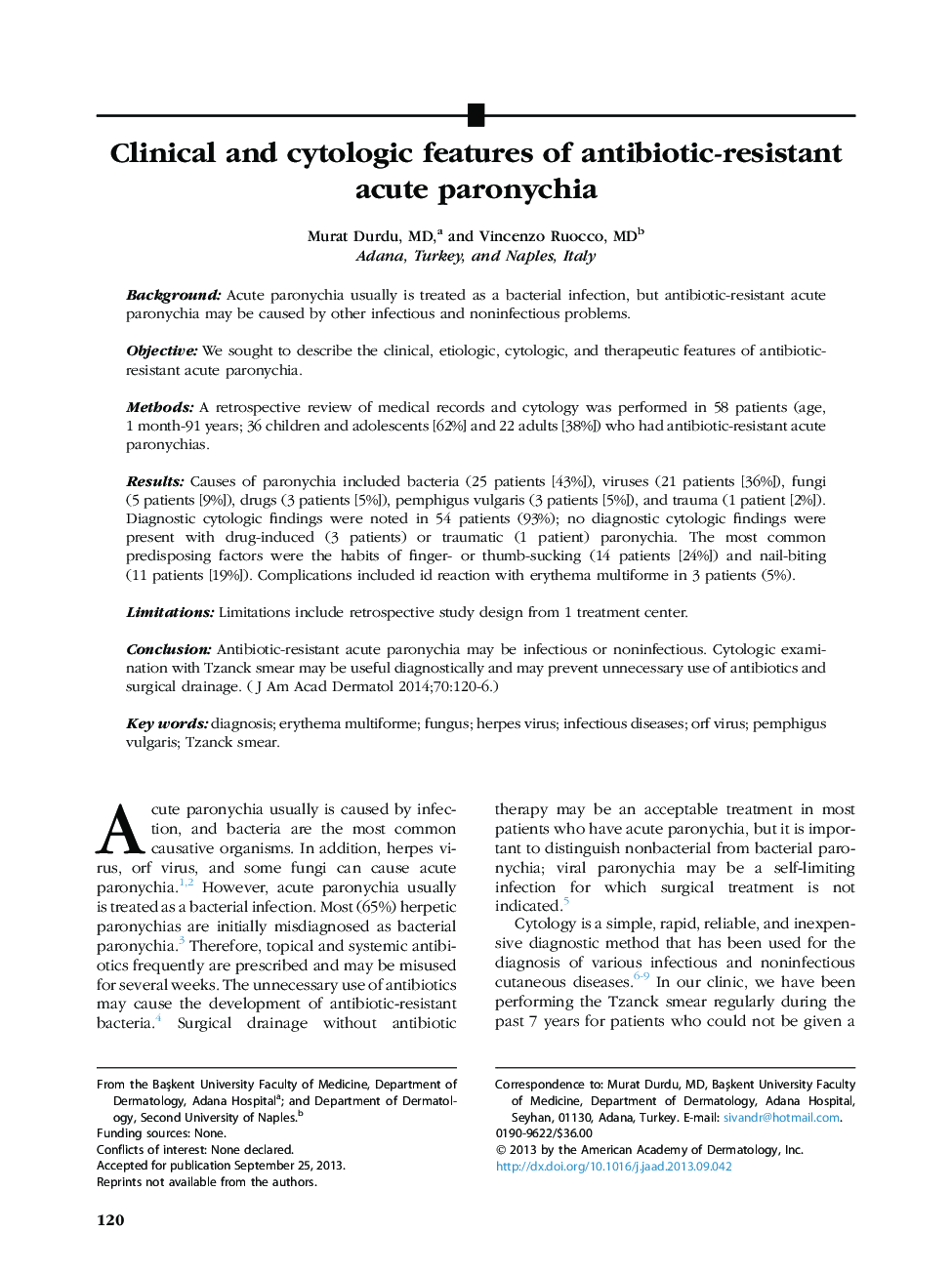| Article ID | Journal | Published Year | Pages | File Type |
|---|---|---|---|---|
| 6072536 | Journal of the American Academy of Dermatology | 2014 | 8 Pages |
BackgroundAcute paronychia usually is treated as a bacterial infection, but antibiotic-resistant acute paronychia may be caused by other infectious and noninfectious problems.ObjectiveWe sought to describe the clinical, etiologic, cytologic, and therapeutic features of antibiotic-resistant acute paronychia.MethodsA retrospective review of medical records and cytology was performed in 58 patients (age, 1 month-91 years; 36 children and adolescents [62%] and 22 adults [38%]) who had antibiotic-resistant acute paronychias.ResultsCauses of paronychia included bacteria (25 patients [43%]), viruses (21 patients [36%]), fungi (5Â patients [9%]), drugs (3 patients [5%]), pemphigus vulgaris (3 patients [5%]), and trauma (1 patient [2%]). Diagnostic cytologic findings were noted in 54 patients (93%); no diagnostic cytologic findings were present with drug-induced (3 patients) or traumatic (1 patient) paronychia. The most common predisposing factors were the habits of finger- or thumb-sucking (14 patients [24%]) and nail-biting (11Â patients [19%]). Complications included id reaction with erythema multiforme in 3 patients (5%).LimitationsLimitations include retrospective study design from 1 treatment center.ConclusionAntibiotic-resistant acute paronychia may be infectious or noninfectious. Cytologic examination with Tzanck smear may be useful diagnostically and may prevent unnecessary use of antibiotics and surgical drainage.
